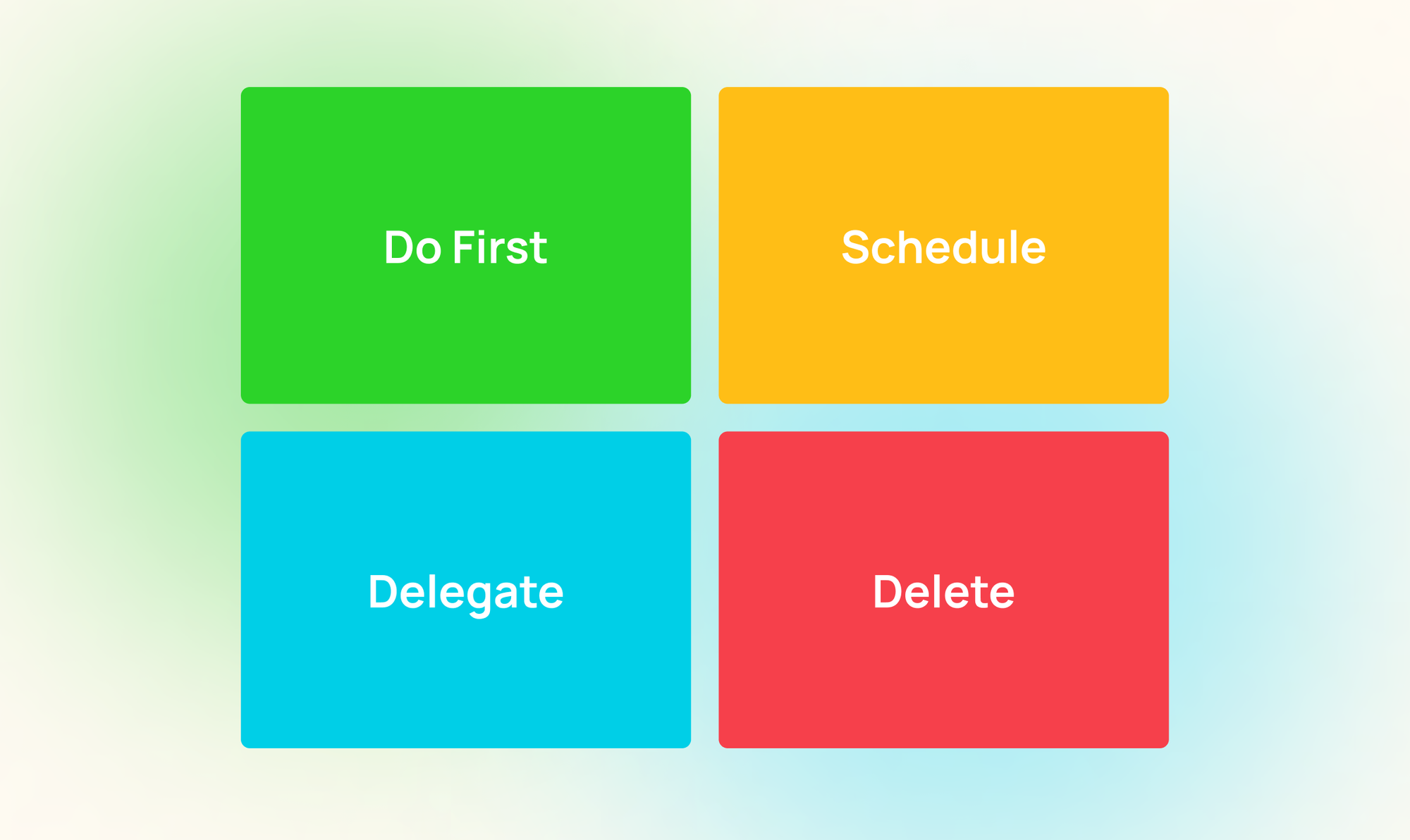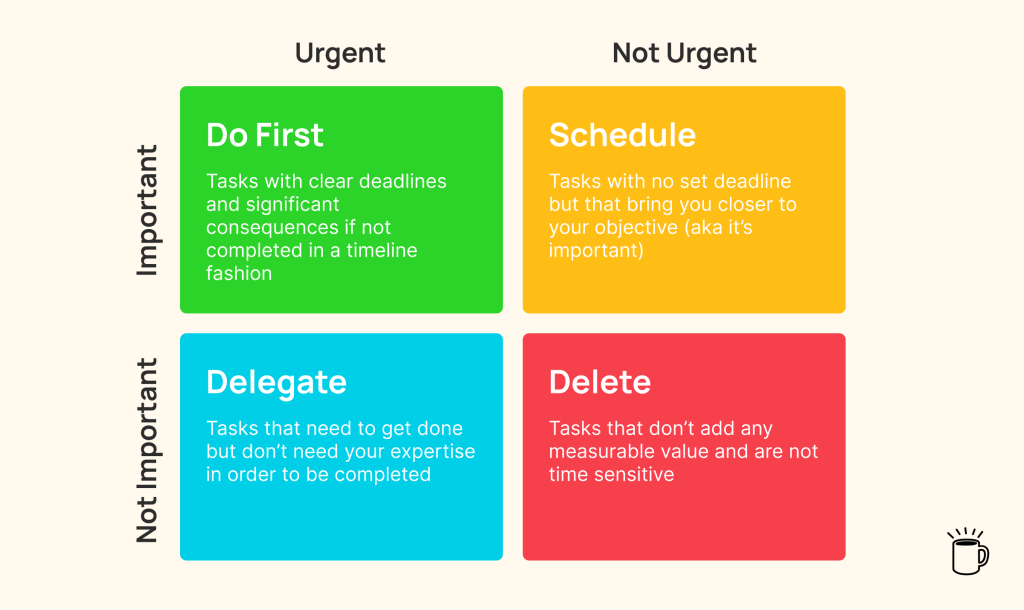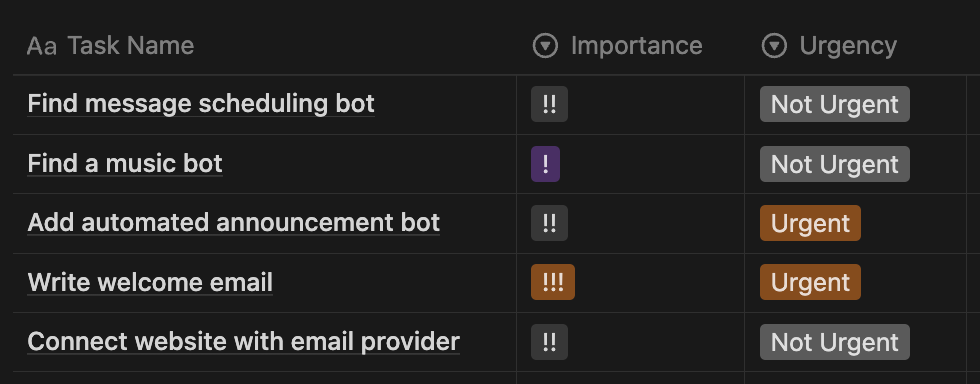Join thousands of readers 
Get the Feel Good Sundays newsletter sent straight to your inbox!
If you balance a lot of projects or tasks all at once and are looking for some tips on how to properly and efficiently prioritize your work, this article is for you!

Ever feel overwhelmed by a seemingly (or actually) endless to-do list? Whether you’re a small business owner, creative, student, or digital professional—you probably know that feeling well. The best way to tackle a long to-do list is to triage it: evaluate all your tasks and prioritize them so you know what the easiest next step should be. Being busy is not the same thing as being productive and sometimes the best thing you can do is to take a step back and evaluate whether your tasks actually help you reach your overall objective or long-term goals.
One of the best prioritization frameworks I’ve used is the Eisenhower Matrix. In this article we’re going to:
“I have two kinds of problems: the urgent and the important. The urgent are not important, and the important are never urgent.”— Dwight D. Eisenhower

The Eisenhower Matrix is a simple framework that helps you identify what tasks are the most urgent and mission critical. The matrix is exactly that—four quadrants that guide how you categorize your tasks.
Urgent tasks are the tasks that are time-sensitive and require your immediate attention.
Important tasks are the tasks that contribute to your long-term mission, values, and goals. They may not yield immediate results but are mission critical.
The four quadrants of the Eisenhower matrix is easy to use.
Q1 Do First - These are tasks that are important and urgent. This could be studying for an exam or fixing a bug in your code. Get these done first.
Q2 Schedule - These are tasks that are important but not urgent. Successful people spend the most time in this section. This is also called the Quadrant of Quality. However, most people don’t spend enough time here as their attention gets pulled away by “more urgent things”.
Q3 Delegate - These are tasks that are urgent but not important. These are typically interruptions from your goal and are tasks where you’re helping others meet their goals. They are less important to you than others but still pretty urgent.
Q4 Delete - These are tasks that are neither important nor urgent. They’re typically bad habits or time-wasters.
To start using the Eisenhower matrix, I would start by creating a master list of everything that you need to do in one place. This might seem daunting at first but we’ll work through it. Once you have a master list, start going down the list 1 by 1 and placing it in one of the four quadrants. You can just write Q1, Q2, Q3, or Q4 next to it.
This will take some time but doing this will help you figure out exactly which tasks you should be working on first and which ones don’t help you move forward at all.
If you use Notion to manage all of your to-dos, good job! You’re already well on your way to managing your time efficiently. To build the Eisenhower Matrix into your tasks board is easy. Just create two new properties into your tasks. The first should be “Urgency” and the second, “Importance”.

Once you’ve created the two new properties, you can then go through and rate all your tasks by their importance and urgency. To view your prioritized tasks in order, sort by Importance.
If you don’t want to build your own Notion template, check out my Notion Project Management dashboard! I built this dashboard as a Marketing Director at a tech start up to help my team create more transparency in our work and manage all of our projects more efficiently. Not only does it have the Eisenhower Matrix built in to help prioritize tasks, it also is built around Google’s OKR method which helps to align all tasks to your main objectives and goals.
If you want more productivity tips sent straight to your inbox, consider signing up for my newsletter! I share productivity tips and more each week.
Get the Feel Good Sundays newsletter sent straight to your inbox!